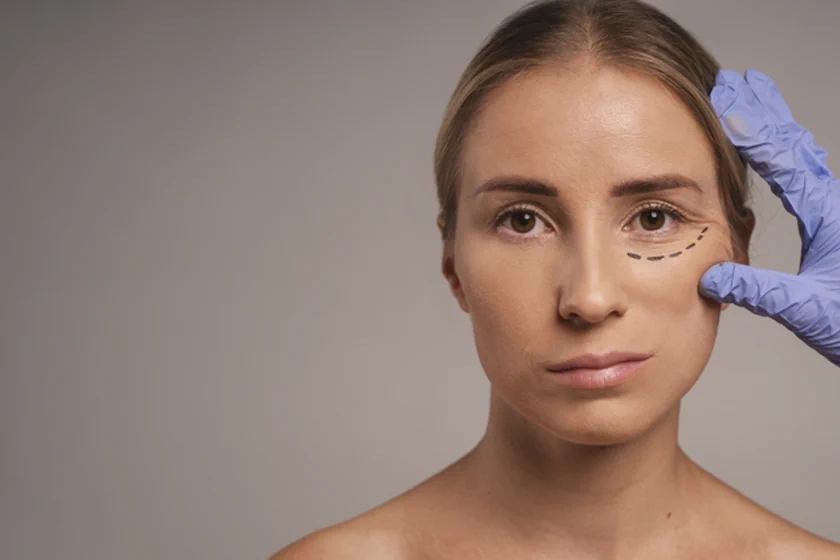In the bustling city of Vadodara and its surroundings, eye health is a topic that often goes unnoticed until discomfort arises. One such common yet overlooked condition is Chalazion, frequently confused with a stye. This blog aims to shed light on Chalazion, providing comprehensive insights into its causes, symptoms, and treatment options. Tailored for the residents of Vadodara, Gujarat, and beyond, this guide will help you understand Chalazion and how to effectively manage it.
What is a Chalazion?
A Chalazion is a small, usually painless, lump or swelling that appears on your eyelid. It occurs when the oil gland of the eyelid gets blocked and swollen. While it might start as a red, tender area, it often develops into a painless, slow-growing lump. Chalazions are often mistaken for styes, similar but more acute infections of these glands. Understanding the difference between the two is crucial for effective treatment. Ordinarily, chalazia (the plural of chalazion) develops in adults between the ages of 30 and 50. They’re less common in children, but they can happen
Causes of Chalazion: A Detailed Understanding
Root Causes of Chalazion
A Chalazion, commonly seen among individuals in Vadodara and other regions, emerges primarily due to the blockage of the oil glands in the eyelid. These glands, known as meibomian glands, are responsible for producing oil that forms a part of the tear film protecting the eye. When these glands get clogged, it can lead to the formation of a Chalazion. This section delves deeper into the various factors contributing to such blockages.
Key Factors Leading to Blockage
Eyelid Hygiene: One of the most significant factors is poor eyelid hygiene. Neglecting regular cleaning of the eyelids can lead to the accumulation of oil, debris, and bacteria, which can clog the meibomian glands.
Makeup and Skincare Products: For those who use eye makeup regularly, improper removal or excessive use of products like eyeliner and mascara can contribute to gland blockages. It’s crucial to thoroughly clean makeup from the eyelids and lashes.
Blepharitis: Individuals suffering from blepharitis, a condition characterized by inflamed eyelids, are at a higher risk of developing Chalazions. This inflammation can contribute to the malfunctioning and blockage of oil glands. Blepharitis is commonly seen in patients with dandruff in scalp.
Chronic Dry Eyes: Those with chronic dry eye syndrome may experience alterations in the oil gland secretions, leading to thicker oils that are more prone to block the glands.
Hormonal Changes: Hormonal fluctuations, particularly those occurring during puberty, pregnancy, or as a result of certain medications, can alter the consistency of the glandular secretions, increasing the risk of blockages.
Environmental Factors: Exposure to dust, wind, and pollutants can irritate the eyes and eyelids, potentially leading to clogged glands. Wearing protective eyewear in dusty environments can help mitigate this risk.
Contact Lens Wear: Long-term contact lens wearers might be more susceptible to Chalazion development, particularly if lens hygiene is not meticulously maintained.
Underlying Health Conditions: Certain systemic health conditions like diabetes or skin conditions like rosacea can also increase the risk of Chalazion formation due to their impact on the body’s oil production and inflammatory responses.
Understanding the Causative Chain
In essence, the process leading to a Chalazion starts with the clogging of the meibomian gland. When the gland is blocked, the oil it produces accumulates, leading to swelling and eventually the formation of a lump. If this trapped oil becomes infected, it can turn into a stye, which is often painful – distinguishing it from the typically painless Chalazion.
Preventing Chalazion
While not all causes of Chalazion are within one’s control, understanding these factors can help in taking preventive measures. Regular eyelid hygiene, proper use and removal of eye makeup, managing conditions like blepharitis, and protecting the eyes from environmental irritants are all practical steps that can significantly reduce the risk of developing a Chalazion.
Prevention of Chalazion largely involves maintaining good eyelid hygiene. Regular cleaning of the eyelids, avoiding touching the eyes with unclean hands, and using proper makeup removal techniques can significantly reduce the risk. Additionally, managing underlying conditions like blepharitis is crucial in preventing recurrent Chalazions.
Symptoms of Chalazion: An In-Depth Look
Identifying a Chalazion
Chalazion, commonly encountered in regions like Vadodara, Gujarat, manifests distinct symptoms that set it apart from other eyelid issues. Recognizing these symptoms is crucial for early intervention and effective treatment. This section explores the symptoms in detail, helping the general masses understand what to watch out for.
Common Symptoms of Chalazion
Lump on the Eyelid: The most noticeable sign of a Chalazion is the appearance of a small lump or swelling on the eyelid. This lump is typically painless and can occur on either the upper or lower eyelid.
Eyelid Swelling and Redness: Initially, the area around the Chalazion may become swollen and red. This inflammation is the body’s response to the blocked gland.
Discomfort or Tenderness: While a Chalazion is not usually painful, it can cause a certain level of discomfort, especially when blinking or when touched.
Sensation of a Foreign Body: Individuals may feel like there’s something in their eye due to the presence of the lump. This sensation is more pronounced during blinking.
Tearing: A Chalazion can stimulate increased tear production, leading to watery eyes. This is often a reflex response to the irritation caused by the Chalazion.
Blurred Vision in the eye: In cases where the Chalazion is large enough to press against the eyeball, it can distort the shape of the eye’s surface, leading to blurred vision.
Mild Irritation or Itchiness: Some people may experience a sense of itchiness or minor irritation around the affected area.
Progression of Symptoms
A Chalazion develops gradually over a few days to weeks. Initially, it may start as a small, red, and tender area on the eyelid before transforming into a firm lump. Unlike a stye, a Chalazion usually doesn’t result in a significant amount of pain and often resolves on its own over time.
Differentiating Chalazion from a Stye
It’s important to differentiate a Chalazion from a stye, as their presentation can be similar. A stye typically appears at the base of an eyelash and is often painful, whereas a Chalazion, forming further up on the eyelid, tends to be painless.
When to Seek Medical Attention
If the Chalazion persists for several weeks without improvement, or if it begins to interfere with vision, it’s advisable to seek medical attention. Additionally, if the swelling is severe, affecting the entire eyelid or eye, a consultation with the best eye specialist in Vadodara like Dr. Surbhi Kapadia is recommended.
Diagnosis of Chalazion
Diagnosing a Chalazion usually involves a simple examination of the eyelid. Healthcare professionals in Vadodara, including Dr. Surbhi Kapadia, can often diagnose it based on its appearance. In rare cases, if there’s a concern about the nature of the lump, further tests or even a biopsy might be recommended to rule out more serious conditions.
Treatment Options for Chalazion
The treatment for Chalazion varies based on its size and the discomfort it causes. Small Chalazions often resolve on their own over time. Home remedies like warm compresses can expedite the healing process. However, larger or persistent Chalazions might require medical interventions. Treatments range from prescribed medications like chalazion medication or stye eye ointment to surgical procedures in more stubborn cases. Dr. Kapadia and other eye specialists in Vadodara might recommend minor surgery as the best treatment for severe Chalazions.
Chalazion vs. Stye (Hordeolum)
It’s important to differentiate between a Chalazion and a stye, as their treatments can differ. A stye, or hordeolum, is typically more painful, appears at the eyelid’s edge, and is caused by a bacterial infection. On the other hand, a Chalazion is usually painless and appears further on the eyelid. Understanding this distinction helps in seeking appropriate treatment.
When to See a Doctor
Consulting a doctor is advisable if you notice a persistent lump on your eyelid, especially if it interferes with your vision or causes significant discomfort. Early consultation with an eye care professional like Dr. Surbhi Kapadia can prevent complications and ensure effective treatment.
Conclusion
Chalazion, though common, should be addressed with proper care and attention. Understanding its causes, symptoms, and available treatments is key to managing this condition effectively. Residents of Vadodara and nearby regions can rely on the expertise of healthcare professionals like Dr. Kapadia for top-quality eye care.
If you’re experiencing symptoms of a Chalazion or have concerns about your eye health, don’t hesitate to reach out to Dr Surbhi Kapadia or your local eye care specialist. Schedule an appointment today to ensure the health and comfort of your eyes.
![]()







